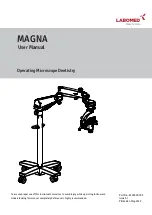
HFO:
Change the pitch of the HFO.
Higher voltage = lower pitch. The depth
of pitch modulation depends partly
on the initial setting of the HFO pitch
knob. For instance the depth will be
much greater when the knob is in the
middle than it is when all the way up
or down.
2 BYTE
sockets [inputs]
and switch
Plug multiple bits into the BYTE
sockets to create stepped voltages
that can then be applied to the VCO
(via the BYTE switch)and/or the
CV output jack (right side panel)
to control external equipment.
The BYTE switch turns BYTE CV
modulation of the VCO on(up)
and of(down).
TIPS
•
Try the example patch pictured
to the left. Insert jumpers one at
a time to get an idea how they work.
•
Use the longer divisions (/128 and up)
to create patterns that change over
long periods of time.
•
Patch the 4 cables (as shown) into
the BYTE socket to get a ramped
arpeggio like the one shown in the
drawing below.
Switch the bits around to get
diferent patterns.
•
The BYTE input jacks can also work
as outputs when you have several
TECH NOTE The byte section is a standard R2R
digital to analog converter. When multiple bits
are fed into the R2R you get a stepped voltage
at the output.
bits connected. Patch a cable into
any available spot in the BYTE section
and connect to the diferent oscillator
CV input sockets or the BEND sockets.
•
The left terminal of each BEND
socket functions as a crude pitch CV
input. The results are unpredictable
but can be very efective in diferent
scenarios.
&TRICKS
•
Patch /32 to MUX1 INH and /4
to MUX2 INH.
•
Connect the MUX1&MUX2 output
sockets from the adventure bits
section into the VCO CV and LFO CV
inputs.
•
Patch more cables from the divider
bits to the MUX and CV inputs and
observe the changes in the sound
and behavior.
/2 to “E” input
/4 to “T” input
/8 to “Y” input
Output voltage






































